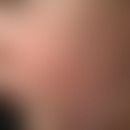Synonym(s)
HistoryThis section has been translated automatically.
Franke first described the hyperreflexia of the pressor receptors in the area of the carotid sinus in 1963 (Lüderitz 1986).
DefinitionThis section has been translated automatically.
A carotid sinus syndrome (CSS) is a hypersensitivity of the carotid sinus, which can be triggered by head rotation, compression from outside (tight collar) etc. (Berlit 2006).
In healthy individuals, stimulation of the baroreceptors leads to a slight drop in heart rate and slight vasodilatation. However, in a hypersensitive carotid sinus this response is significantly increased. If clinical symptoms also occur, this is referred to as CSS (Erdmann 2009).
You might also be interested in
ClassificationThis section has been translated automatically.
CSS is one of the neutrally mediated syncopal syndromes (Gertsch 2008). The CSS differentiates between 3 different forms:
- Cardioinhibitory type: This subtype is the most common with 90%. Here the vagus irritation causes a sinus arrest or SA block and leads to a ventricular asystole of ≥ 3 s or even to asystole (Herold 2020 / Erdmann 2009).
- Vasodepressor type: This form is rather rare with about 10 %. Vagus irritation leads to hypotension with a drop in blood pressure of > 50 mmHg. There is no evidence of severe bradycardia or asystole (Herold 2020).
- Mixed form: Mixed forms of the above mentioned subtypes occur in about 20 % - 25 % of cases (Erdmann 2009).
Occurrence/EpidemiologyThis section has been translated automatically.
CSS occurs in up to 25 % of older people (Herold 2020) and affects preferably the male gender (Erdmann 2009). However, symptoms are found in only about 10 % of those affected (Berlit 2006).
Associated diseases: CSS is sometimes associated with the following diseases:
- coronary heart disease (frequent)
- diabetes mellitus
- arterial hypertension (Erdmann 2009)
In the area of the carotid sinus, there is usually arteriosclerosis, but this rarely leads to more severe stenoses (Erdmann 2009). In rare cases a combination of CSS and sick- sinus syndrome is found (Gertsch 2008).
EtiopathogenesisThis section has been translated automatically.
First and foremost, arteriosclerotic changes of the vessel wall in the area of the carotid sinus play a role. These lead to an increase in sensitivity of the baroreceptors (Bob 2001).
PathophysiologyThis section has been translated automatically.
In CSS there is a malfunction between the carotid sinus located at the carotid bifurcation and the sinus node. Due to abnormal vagal function and hypersensitivity to acetylcholine, the hypersensitive baroreceptors located in the carotid sinus cause a slowing down of the polarization of the sinus node when stimulated (Gertsch 2008 / Gülker 1998).
ClinicThis section has been translated automatically.
- Swindle
- Presyncopes
- Syncope (often after turning the head, constricting the collar, shaving, massage of the carotid bifurcation) (Herold 2020)
DiagnosticsThis section has been translated automatically.
Medical history
It is recommended that a detailed anamnesis be taken, with particular attention to:
- Occurrence of symptoms under compression in the area of the carotid sinus due to e.g. turning the head, tight collar, shaving etc. (Herold 2020)
Duplex sonography: Duplex sonography of the carotides serves to exclude mobilizable plaques. According to empirical data, this examination is recommended for patients with flow sounds above the carotid before carotid massage (Diehl 2020).
Carotid sinus massage: The carotid sinus massage should be performed:
- after duplex sonography, if flow sounds are present above the carotid (to avoid embolism)
- under continuous ECG- derivation
- and continuous, non-invasive blood pressure measurement
During the examination, both glomeras of the carotid arteries are massaged manually for 10 seconds one after the other. If the result is negative, it is recommended to repeat the procedure while standing (in the best case on the tilting table) (Diehl 2020).
Note: The examination is also called "Czermak pressure test" (Lüderitz 1986).
Absolute contraindications:
- large, irregular plaques or stenoses of > 70% of the carotid artery
- within the last 3 months
- TIAs
- Apoplexy
- Myocardial infarction (Diehl 2020)
The test is considered positive for hypertensive carotid sinus if:
- ≥ 3 sec. Asystole
- and / or
- systolic RR- drop of > 50 mmHg
Should a syncope occur, this is referred to as a CSS (Diehl 2020). It should be taken into account that the test shows a ≥ 3 sec. persistent asystole or a RR drop of > 50 mmHg in 25% of the over 65-year-olds and should only be evaluated in connection with the medical history and clinic (Herold 2020).
Differential diagnosisThis section has been translated automatically.
Paraganglioma in the middle ear (rare - Berlit 2006 / Hosten 2007).
TherapyThis section has been translated automatically.
The patient should be informed about the favourable prognosis of CSS. Treatment is not necessary in every case. For certain indications, the implantation of a pacemaker (SM) may be given (see below).
With the exclusively vasodepressor type there is generally no indication for SM implantation, since this form does not respond to pacemaker therapy (Berlit 2006 / Erdmann 2009).
Pacemaker implantation: The indication for a pacemaker exists in patients with:
- dominant cardioinhibitory carotid sinus syncope
- frequently recurrent reflex syncope in > 40 year olds, which could be documented (Diehl 2020)
Progression/forecastThis section has been translated automatically.
The CSS has a favourable prognosis, independent of pacemaker implantation. However, in the mixed form (see classification) the recurrence rate is high - even after implantation of a pacemaker (Berlit 2006).
LiteratureThis section has been translated automatically.
- Berlit P (2006) Clinical Neurology. Springer Medicine Publishing House 1249
- Bob (2001) MLP Dual Series: Internal Medicine Special Edition. Georg Thieme publishing house 232 - 233
- Diehl R R et al. (2020) Guidelines for Diagnosis and Therapy in Neurology: Syncopes.
- Erdmann (2009) Clinical Cardiology: Diseases of the heart, circulation and the vessels near the heart. Springer Medizin Verlag 86 - 87
- Gertsch M (2008) The ECG: At a glance and in detail. Springer Medizin Verlag 400
- Gülker H et al (1998) Guidelines for the therapy of cardiac arrhythmias. Walter de Gruyter Publisher 31 - 31
- Herold G et al (2020) Internal medicine. Herold Publishing House 281
- Hosten N et al (2007) Computed tomography of the head and spine. Georg Thieme Publisher 276
- Kasper D L et al (2015) Harrison's Principles of Internal Medicine. Mc Graw Hill Education 2571
- Lüderitz B et al (1986) Cardiac pacemakers: Therapy and diagnosis of cardiac arrhythmias. Springer publishing house 249 - 250, 405
- Stierle U et al (2014) Clinical Guide to Cardiology. Elsevier Urban and Fischer
Disclaimer
Please ask your physician for a reliable diagnosis. This website is only meant as a reference.




